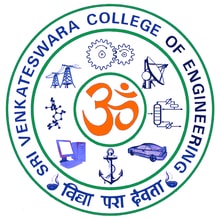Technical Questions & Answers
1. During lactic acid fermentation, net yield of ATP and NADH per mole of glucose is
a) 2 ATP and 2 NADH
b) 2 ATP and 0 NADH
c) 4 ATP and 2 NADH
d) 4 ATP and 0 NADH
2. The degree of inhibition for an enzyme catalyzed reaction at a particular inhibitor concentration is independent of initial substrate concentration. The inhibition follows
a) Competitive inhibition
b) Mixed inhibition
c) Uncompetitive inhibition
d) Non- competitive inhibition
3. In N – linked glycosylation, the oligosaccharide chain is attached to protein by
a) Asparagine
b) Arginine
c) Serine
d) Threonine
4. Identify the statement that is not applicable to an enzyme catalyzed reaction
a) Enzyme catalysis involves propinquity effects
b) The binding of substrate to the active site causes a strain in the substrate
c) Enzyme do not accelerate the rate of reverse reactions
d) Enzyme catalysis involves acid base chemistry
5. In zinc finger proteins, the amino acid residues that co-ordinate zinc are
a) Cys & His
b) Asp & Glu
c) Arg & Lys
d) Asp & Arg
6. Which one of the following is an ABC transporter?
a) Multi drug resistance protein
b) Acetylcholine receptor
c) Bacteriorhodopsin
d) ATP synthase
7. The reactions leading to formation of amino acids from TCA cycles intermediates are
a) Carboxylation
b) Isomerization
c) Transamination
d) Decarboxylation
8. Which one of the receptors has the highest affinity for the ligand?
a) R1
b) R2
c) R3
d) R4
9. The active site in the alpha/beta barrel structures is usually located ?
a) Inside the barrel
b) At the amino side of the strand
c) At the carboxy side of the strand
d) At the arbitrary side
10. Natural proteins are composed primarily of 20 alpha amino acids. Which one of the following statement is true for any of these amino acid in a solution of pH 1.5?
a) Only the amino group is ionized
b) Only the carboxylic acid group is ionized
c) Both amino and carboxylic groups are ionized
d) Both amino and carboxylic groups are neutral
11. Which of the following amino acid has three ionizable group
a) Glycine
b) Leucine
c) Valine
d) Lysine
12. Which one of the following metabolic process in mammalian doesn’t occur in a mitochondria?
a) Citric acid cycle
b) Oxidative phosphorylation
c) Fatty acid beta oxidation
d) Glycolysis
13. The mass of 1 kmol of oxygen molecule is _______________g (round off to the nearest integer)
14. Which one of the following need not to be conserved in a biochemical reaction?
a) Total mass
b) Total moles
c) Number of atoms of each elements
d) Total energy
15. Which amino acid residue will destabilize an alpha helix when inserted in the middle of the helix?
a) Pro
b) Val
c) Ile
d) Leu
ANSWERS:
1 -b, 2 -d, 3 -a, 4 -c, 5 -a, 6 -a, 7 -a, 8 -c, 9 -c, 10 -a, 11 -d, 12 -d, 13 -32000g, 14 -b, 15 -a.




